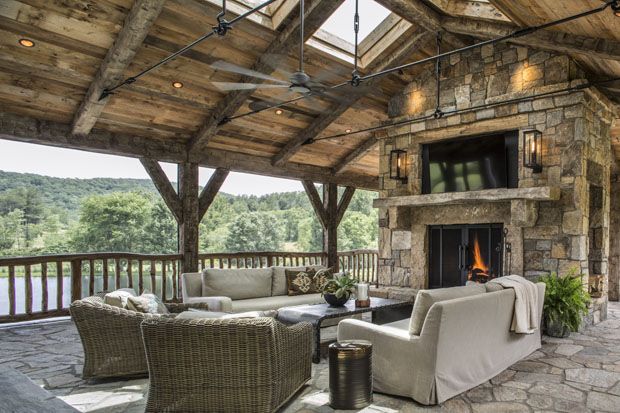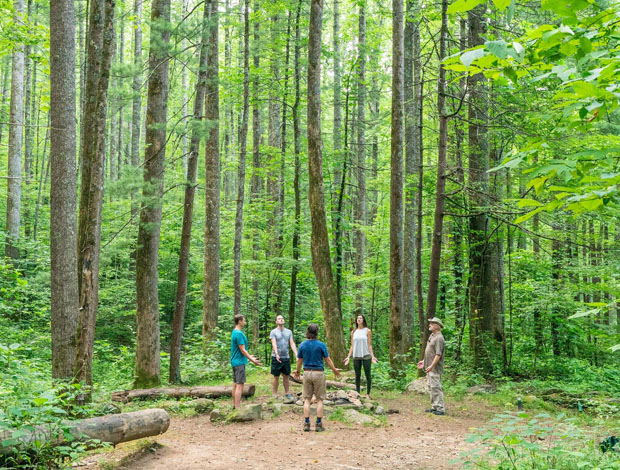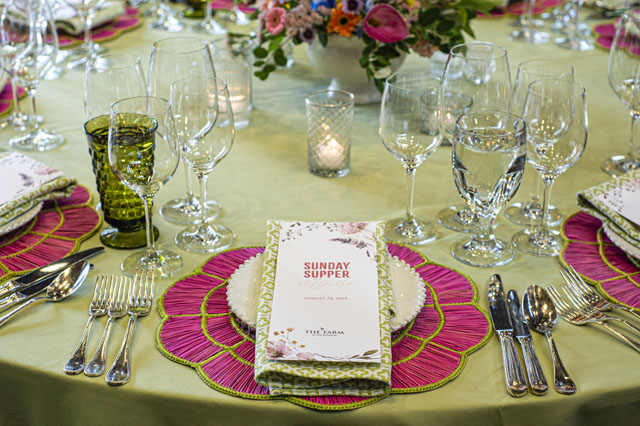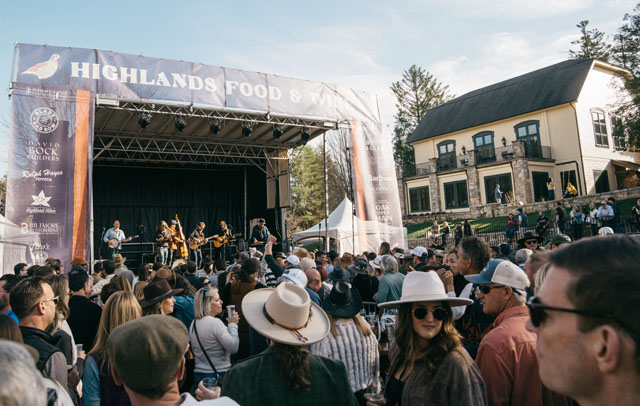Find Dining
02 Aug 2022
A mushroom enthusiast’s guide to foraging
Article and photos by Joey Kyle
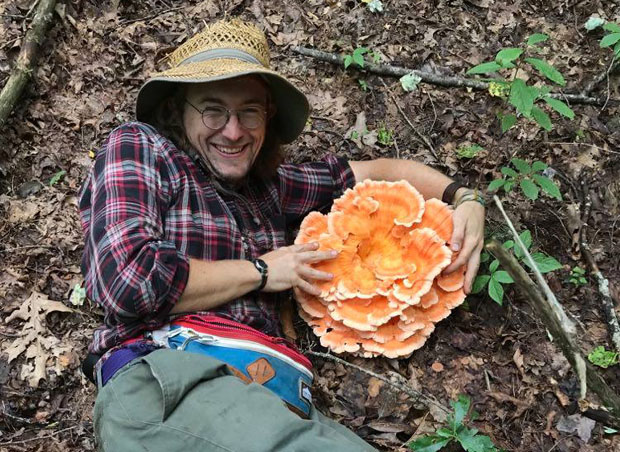
I would like to paint a picture for you. It’s late June here in Highlands, and I walk out to my garden to check on the rain gauge. I had heard some pitter patter on my roof during the night, and I wanted to see what we had to show for Mother Nature’s work. Less than a quarter inch of rain. A metaphorical tear rolls down my face because, at this moment, I’m empathizing with the hundreds of species of fungi lying in wait within our lush and normally-drenched forests here on the Plateau.
I am a certified wild mushroom picker which means I took an exam, and the state of North Carolina trusts me to not poison or kill anyone by misidentifying a mushroom. I originally pursued the certification because I was suffering from an acute case of mushroom fever. On my very first day after moving to the Plateau six years ago, I photographed at least 40 species of mushrooms.
Later that fall, I was hiking with a friend, and we happened upon a ten-pound hen of the woods mushroom (Grifola frondosa). We sold half of our haul to a local restaurant for $100 and I made an exquisite mushroom gravy with the other half. I thought, “Wait a second. You’re telling me that I can pick wild mushrooms, make some money, and enjoy delicious and unique flavors all while basking in the woods?” I was hooked on what some might call ‘find dining.’
I’ve now come to expect certain mushrooms in certain places at certain times of the year because I’ve stayed in the same place. I grew up in suburbia with a family who encouraged me to get to know my surroundings, but I had never eaten mushrooms straight from the woods, let alone anything else apart from white button mushrooms. The woods here, on the other hand, are so loaded with fungal diversity (edible, inedible, medicinal and toxic) that the mushrooms practically jump out at you. If you decide to start arming yourself with the knowledge required to safely identify—and perhaps consume—mushrooms straight from the woods, I promise you that the journey will not disappoint. Here’s some of what you have to look forward to.
For our imaginary mushroom journey, let’s picture a dry morning in August after a week of solid afternoon rains. We pack some paper bags, a knife, and a copy of Mushrooms of the Carolinas. We pick a trail on national forest land where we know we’re allowed to pick mushrooms for personal consumption. The woods are a blend of hardwoods with a few pine trees mixed in. Almost immediately, we notice a sea of golden mushrooms coming out of the ground near some old oak trees. They’re egg yolk yellow in color with shallow wrinkles on the underside. They must be the delicious golden chanterelles (Cantharellus spp). We don’t feel guilty picking most of what we see because the mycelium under the soil remains intact. We’re simply picking the apples off of the metaphorical tree.
Nearby, growing on a stump is a cluster of bright orange mushrooms. We know they’re not chanterelles because they’re growing on wood with deeply-set gills. They must be jack-o-lantern mushrooms (Omphalatus illudens), and the book says they’re poisonous and glow in the dark to attract insects to disperse their spores. Coming out of the forest, we see a little brown mushroom with gills. As soon as we cut it, it begins to exude a white latex-like substance. It’s sticky to the touch and starts to smell fishy, so it must be the edible fish cap mushroom (Lactifluus volemus).
We pick several of these fish caps and see a solitary white mushroom with gills. It looks to be coming out of a small cup in the ground which lets us know that it’s in the Amanita genus. We’re looking at the destroying angel (Amanita bisporigera), one of only two lethal mushrooms in the Southeast. Eating only one of these mushrooms is enough to kill an adult. We bow in deference to the ominously beautiful mushroom and go on our merry way.
We go home and make a tasty mushroom risotto with the chanterelles and fish caps while reading up on what else we can find in these woods. We have mushrooms that taste like chicken when cooked (Laetiporus sulphureus), mushrooms that parasitize moth pupae (Cordyceps militaris), mushrooms that get squirrels high (Russula emetica), mushrooms that are actually a mold that convert poisonous mushrooms into a delicacy (Hypomyces lactifluorum), mushrooms that help regenerate neurons (Hericium erinaceus), and a lot more. There’s no turning back on the journey now. We let the mushroom fever wash over us and look forward to a future of cautious curiosity with our new fungi friends.
Joey Kyle is the Farm Manager at Many Hands Peace Farm at The Mountain Retreat and Learning Center in Highlands. He teaches classes on wild mushrooms and plants to summer campers and the public. He also makes silly farm-related music under the name Jojo Vulture.
Quick Tips for Foraging Mushrooms
- Be 120% certain on your identification before eating a mushroom.
- You should always cook mushrooms (truffles are the exception).
- Cooking mushrooms in oil and freezing is a great long-term storage technique.
- Don’t take more mushrooms than you need or can preserve.
- It is best practice to cut your mushrooms with a knife at the base.
- Be aware of any environmental contaminants in the area where you are picking.
- Store freshly harvested mushrooms in paper bags in the fridge.
- When trying a new mushroom, start with a small quantity.
- You can harvest mushrooms for personal consumption from private property with consent of the landowner or on National Forest land.
- Familiarize yourself with the common poisonous and the two lethal mushrooms found in the Southeast: the destroying angel (Amanita bisporigera) and deadly galerina (Galerina autumnalis).
- If you or anyone you know may have ingested a poisonous or lethal mushroom, call Poison Control immediately at 1-800-222-1222.

